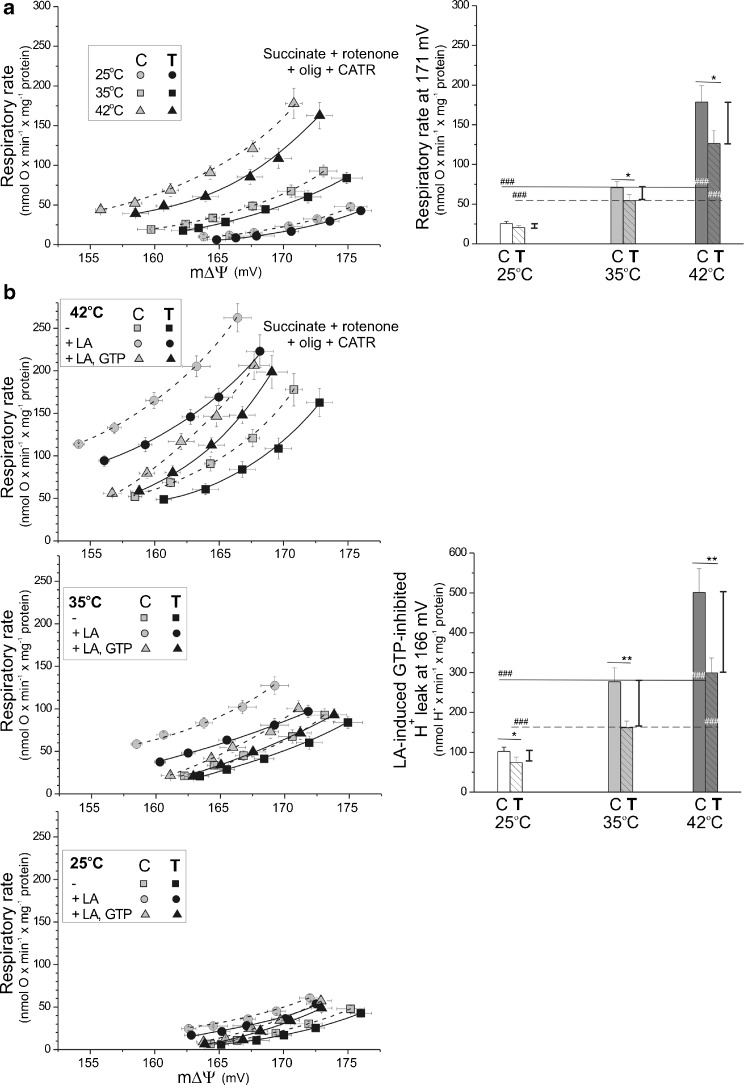Fig. 4.
The influence of exercise training on mitochondrial membrane proton conductance at various temperatures in the absence (a) or presence (b) of UCP modulators. Respiratory rates and mΔΨ were measured simultaneously during progressive inhibition by malonate (up to 1.7 mM) of the respiratory chain oxidizing succinate (5 mM) plus rotenone (2 μM) in the presence of 0.7 μg/ml oligomycin (olig) and 1.8 μM carboxyatractyloside (CATR). Measurements of proton leak kinetics were performed in the absence (a) or presence (b) of UCP modulators (16 μM linoleic acid, LA) and/or 2 mM GTP) on nonphosphorylating mitochondria incubated at 25, 35, or 42 °C. a (right panel) Respiratory rates at the highest common mΔΨ value (171 mV) for all tested temperature conditions in mitochondria from control (C) and trained (T) rats. The data are presented as the means ± SD (n = 12) and are from four independent mitochondrial preparations (triplicate assays for each conditions). b (right panel) Linoleic acid-induced, GTP-inhibited proton leak (UCP activity) at the highest common mΔΨ value (166 mV). Data from representative experiment (mitochondrial preparation) are presented as the means ± SD (n = 3) (triplicate assays for each condition). a, b (right panels) Number signs, comparison vs. value obtained at 35 °C for control (C) or trained (T) group. Asterisks, comparison vs. corresponding value obtained for control rats. Ranges of changes between control and trained rats are shown as vertical lines

